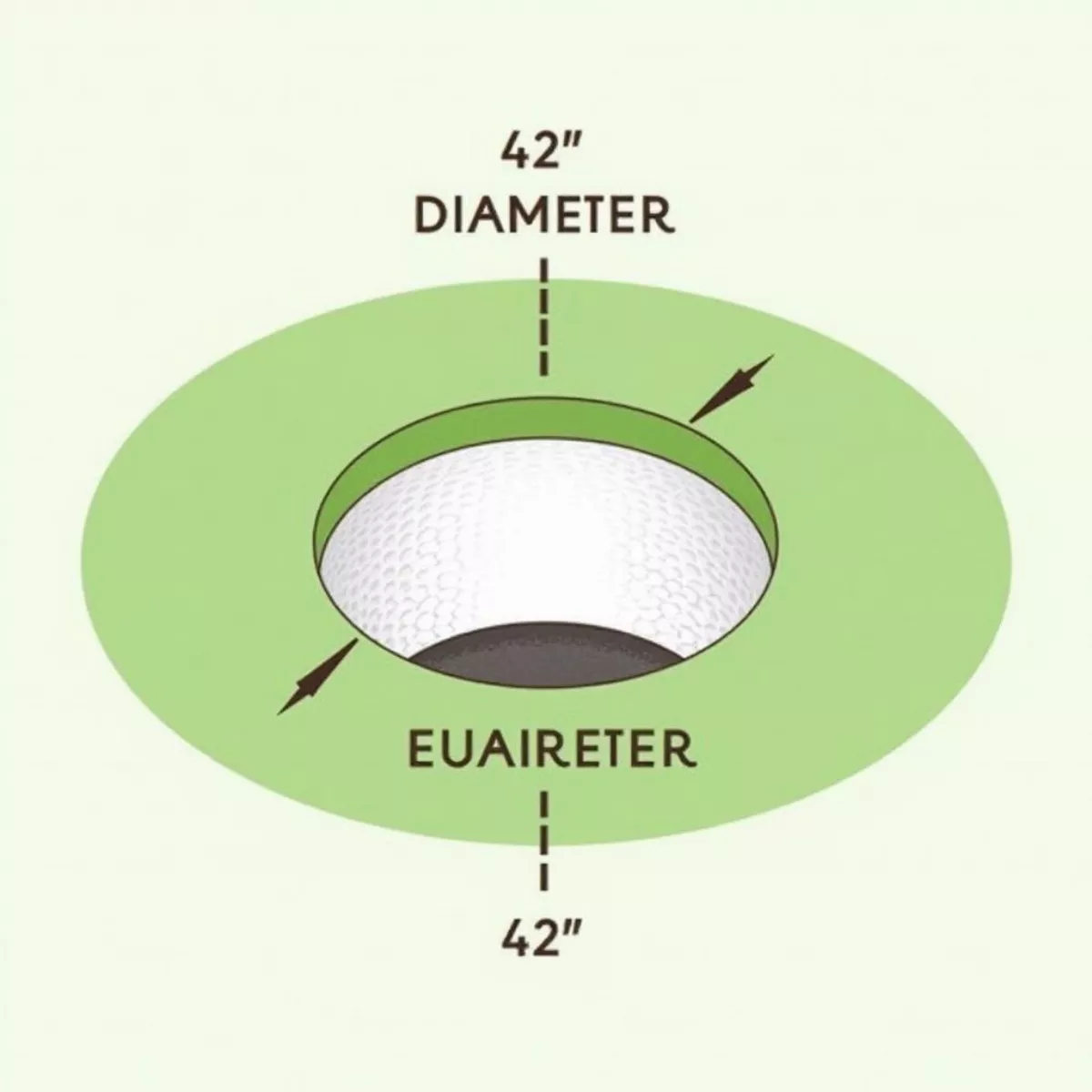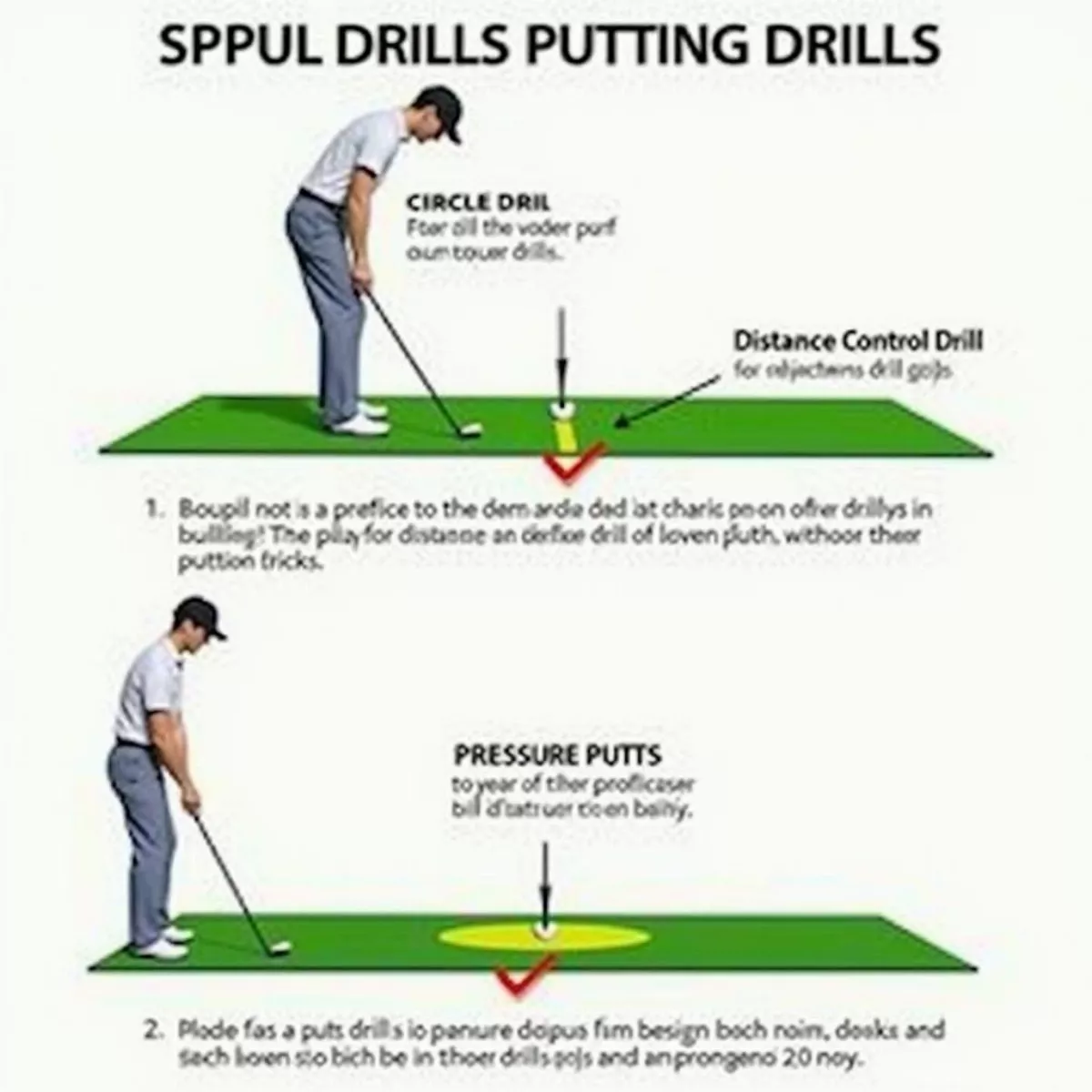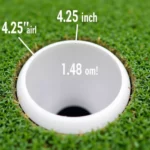Golf is one of the most beloved sports worldwide, drawing players of all ages and skill levels. While most enthusiasts focus on improving their swings, mastering putts, or selecting the right club, few pause to consider one of the most essential structures on the course: the golf hole itself. So, what size is a golf hole, and why does it matter? In this guide, we’ll explore the standard dimensions, the significance of these measurements, and much more, all while keeping the information engaging and accessible.
The Standard Dimensions of a Golf Hole
According to the United States Golf Association (USGA), the size of a golf hole is quite specific. Each golf hole has the following dimensions:
- Diameter: 4.25 inches (approximately 10.8 cm)
- Depth: 4 inches (approximately 10.2 cm)
These measurements may appear small; however, they are specifically designed to challenge golfers. The 4.25-inch diameter allows the ball to fit but does require precision when putting.
 Golf Hole Dimensions
Golf Hole Dimensions
Why 4.25 Inches?
You might wonder why the size was determined to be 4.25 inches. According to historical documentation, the diameter was standardized in 1891 by the Royal and Ancient Golf Club of St. Andrews. The size provides an ideal balance: It ensures that a well-struck shot will have a fair chance of dropping into the hole while still necessitating careful aim and control.
Quote: “Golf is a game of precision, and the hole size is a critical factor that influences how we play it.” – Golf Historian
The Importance of Hole Size in Golf
Understanding the size of a golf hole is crucial for several reasons:
- Game Balance: The dimensions of the hole create a balance between challenge and playability.
- Skill Development: Players must develop a blend of distance control, touch, and precision to consistently make putts.
- Equipment Standards: Golf balls have a circumference of approximately 8.6 inches. The 4.25-inch hole provides just the right amount of forgiveness for golfers using regulation equipment.
- Course Design: Golf course designers consider hole size when designing a green. Some courses may use a larger hole for charity events or informal play to encourage new golfers.
Golf Holes and Course Design
While the standard size for a golf hole is consistent, course designers sometimes adjust hole size for specific events or player needs. For instance:
| Hole Size | Purpose |
|---|---|
| 4.25 inches | Standard play (USGA/ R&A) |
| 5 inches | Charity events, beginner courses |
| 6 inches | Fun events, informal play |
 Golf Course Design: Hole Size Variations
Golf Course Design: Hole Size Variations
The Psychology of the Hole Size
Interestingly, the size of the hole can have psychological implications. Larger holes may make players feel more confident, encouraging new golfers to take up the sport and enhancing their enjoyment. Conversely, the traditionally sized hole can offer more satisfaction to experienced players when they sink a putt.
Techniques for Sinking More Putts
Now that we have the hole size covered, let’s look at some practical techniques to help improve your putting game with respect to understanding the hole.
- Aim and Alignment: Always ensure your putter face is square to your target.
- Green Reading: Pay attention to the contours of the green. Understanding slope can be a game-changer.
- Distance Control: Practice different lengths of putts to develop a sense of power.
Practice Drills
| Drill | Description |
|---|---|
| Circle Drill | Place balls around the hole in a circle and sink them one by one. |
| Distance Control Drill | Practice putts of varying distances, focusing on feel. |
| Pressure Putts | Create scenarios where you have to sink putts under pressure. |
 Golf Putting Drills for Accuracy
Golf Putting Drills for Accuracy
Conclusion
The size of a golf hole plays a significant role in shaping the game we know and love. A 4.25-inch hole is the perfect balance of challenge and playability, providing a fair yet demanding target for golfers of all skill levels. Better understanding this key aspect of golf can help improve your game and enrich your appreciation for the sport.
Key Takeaways
- The standard size of a golf hole is 4.25 inches in diameter and 4 inches deep.
- Hole size impacts game difficulty, skill development, and course design.
- Course designers may adjust hole sizes for charity events and informal play.
- Techniques like aiming, green reading, and distance control are crucial for sinking putts.
FAQ Section
1. Why is the golf hole size standardized?
Standardization ensures a level playing field in competitive play and promotes fair competition across different courses.
2. Can different hole sizes be used?
Yes, while the standard hole size is 4.25 inches, larger holes can be used for special events or purely recreational play.
3. How does hole size affect putting success?
A larger hole can boost confidence and success rates, particularly for newer players.
4. Are all golf courses required to use the standard hole size?
Regulation courses under the USGA and R&A must adhere to the standard size; however, informal or charity events may vary.
5. What are some best practices for putting?
Effective practices include proper alignment, green reading, and consistent distance control to improve your target accuracy.
Feel free to check out our other articles on improving your golf swing and golf club selection to enhance your overall game. Remember, whether you’re a novice or a pro, golf is all about having fun and enjoying the game!

